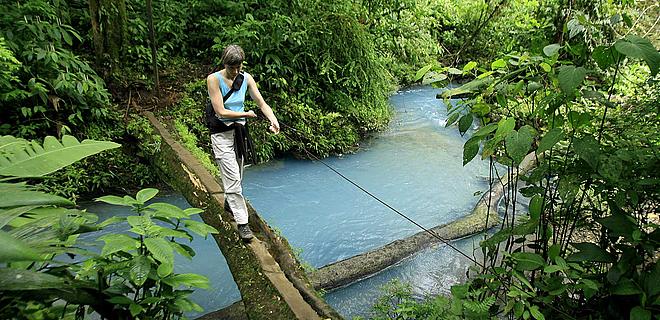As the sun set, 25 boats converged on a small patch of reef just a few hundreds yards from the shore of Kona, Hawaii. With only four moorings, most of the boats illegally dropped anchor on the coral, dangerously tied themselves to other boats, or simply kept their engines running: a serious hazard if there are people in the water. And boy, were there people in the water. Between the snorkelers and us divers, there were a few hundred, all of whom made a frenzied dash for the water as soon as darkness fell. The chaos on the surface overwhelmed us, and we anxiously waited for chains of snorkelers to move away from our boat so we could descend below it.
Underwater, things got even worse. Lights in all directions from the dozens of dive groups disoriented us, and we were tossed this way and that by the high surge as our dive master attempted to move large, venomous urchins out of the way with tongs so we could sit on the reef. She instructed us to hold tight to the coral – even though touching the coral can kill it – as the water pushed us this way and that.
I tried to remind myself that some of the money paid by all of these people would be used to conserve this place, to protect the majestic animals we anxiously awaited. But looking around, it was hard to believe that any of this was going to help the manta rays.
Manta rays, with wingspans in excess of a dozen feet, are some of Hawaii’s biggest attractions. Manta ray ecotourism brings in $3.4 million a year to the small town of Kona, which is big business for the rural island of Hawaii. And ever since the discovery in the 1970s that the rays will feed on plankton drawn by bright lights, turning and flipping acrobatically as they filter in the microscopic food, business has been booming. But according to many who’ve been there for decades, greed has changed the once-conservation-minded industry. Behind-the-scenes drama among tour owners, selfish operating practices and a lack of regulation are placing both the mantas and the tourists that come to see them at risk.
My bad experience has become a common one, explained Martina Wing, a professional photographer and owner of Manta Ray Advocates , who has been filming manta dives for more than a decade. “It’s way too dangerous. It’s out-of-control dangerous … (and) the state of Hawaii is liable,” Wing said. A recent safety assessment commissioned by the Department of Land and Natural Resources (which is responsible for oversight) went so far as to state that “existing data and observations suggest that a severe accident is mathematically inevitable.”
It’s not just the tourists who are in danger. Wing has videotaped anchors dragging on the reef, destroying the fragile ecosystem that supports the plankton that the mantas come to feed on. She has images of mantas with deep cuts from boat collisions because avaricious operators have begun to install lighting on the vessels themselves, which works a little too well when it comes to attracting mantas. Even anchor lines sunk into the water by careless boat operators can leave the rays tangled and injured.
Source: Study suggests ‘green’ vacations could hurt wildlife


